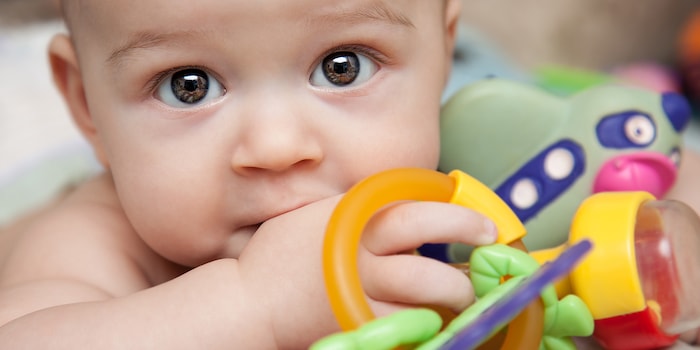
Chemicals in toys: EU wants to regulate ingredients more strictly
Allergic reactions or respiratory problems: Some chemicals in children's toys can be harmful to children. This is why the countries of the European Union have now agreed to ban more ingredients. There are also strict regulations in Switzerland.
There are numerous regulations for toys that are placed on the market in the EU. However, there is still room for improvement - which is why the member states have now decided to introduce stricter requirements for ingredients at a meeting. They thus approved a proposal that the EU Commission had already submitted last July.
The revision of the regulations will not only increase the number of banned ingredients. The treatment with biocides that protect against insects is also to be prohibited. Unless it is an outdoor product such as sandpit moulds. In addition to the more strictly regulated ingredients, the revision also focuses on the warnings on toys. These are to be printed more clearly.
Proof through digital product passport
A tightening of the guidelines is necessary, according to the EU Commission, as so far only components that are proven to be carcinogenic or can alter a child's DNA have been banned. This means that toys within the European Union already have a high safety standard in a global comparison. However, this does not cover all risks and questionable components. The revision is primarily concerned with chemical ingredients that can endanger the respiratory tract or cause allergies.
In addition, manufacturers do not always adhere to the current guidelines. And: even seemingly harmless wooden toys can contain critical amounts of harmful substances. This is shown by studies such as those carried out by Stiftung Warentest. My colleague Katja has summarised the results for you. Some toys even scored 5.
There is also a lack of transparency. The Commission is therefore proposing the introduction of a digital product passport for toys: This would allow manufacturers to prove that their products are manufactured in compliance with the rules. The passports must be presented upon import into the EU before the toys can be imported.
Toy ordinance in Switzerland
In Switzerland, the toy ordinance VSS regulates the permitted ingredients. Here, too, there are strict requirements for the manufacture of children's products. According to the Federal Food Safety and Veterinary Office, "the same requirements apply as in the EU". It is currently unclear whether the current regulations are to be tightened as in the EU.
It is also unclear what the new rules will look like in detail. EU member states and the European Parliament still have to agree on these. However, negotiations are not due to take place until after the European elections at the beginning of June.
Tips from the consumer advice centre
Of course, you don't have to wait until then to buy your kids their next present. If you want to buy safe toys, you can take a look at the relevant page of the Consumer Advice Centre. There, experts have summarised what you should look out for when buying new toys. For example, the products should not emit a strong odour. A "GS" certificate is also important. This label stands for "Tested Safety". You should also steer clear of cheap no-name products and old toys. The workmanship and materials are usually inferior. In addition, the use of phthalate plasticisers in toys was only banned in 2006. You can find all other tips from the consumer advice centre here.
Cat lady and coffee lover from up north. Always on the lookout for «News and Trends».
From the latest iPhone to the return of 80s fashion. The editorial team will help you make sense of it all.
Show all